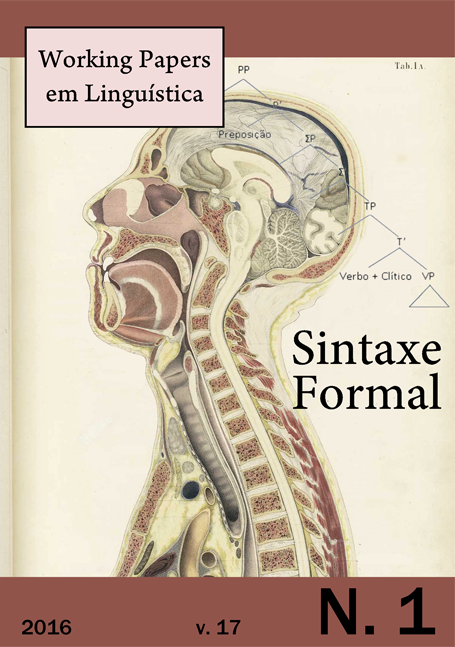Invariable copula in inverted cleft sentences: an example of grammaticalization?
DOI:
https://doi.org/10.5007/1984-8420.2016v17n1p30Abstract
http://dx.doi.org/10.5007/1984-8420.2016v17n1p30
The present research aims to investigate diachronically sentences used to syntactically focalize constituents, the canonical and inverted clefts one. Such sentences are characterized by the sequences copula + Focus + que + IP and Focus + copula + que + IP. The research period range from the 16th to the 19th century, utilizing texts that make up the Tycho Brahe Parsed Corpus of Historical Portuguese. I try to present a discussion on the grammaticalization of the copula in inverted clefts trough the most important evidence from the phenomenon: the absence of tense agreement between the copula and the verb of the subordinate clause.
Downloads
Published
Issue
Section
License
Copyrights belong to the authors, who allow the Working Papers em Linguística journal to publish their work. Total or partial reproduction requires the Editorial Board's authorization. Names and adresses in this website are exclusively used for the journal's purposes and are not available for other purposes and/or third parties.
![]()
This publication is licensed under Creative Commons - Attribution-NonCommercial - 4.0 International.


